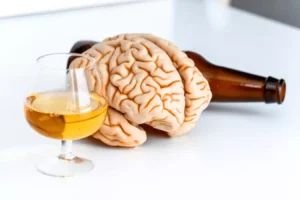Is Moderate Drinking Possible for People With Alcohol Use Disorder?
by wtsadmin

When it comes to choosing between total abstinence or limiting your intake, the answer isn’t black and white. Several factors influence this decision, including societal perception, cultural factors, psychological https://ecosoberhouse.com/ impact, and health implications. You may feel pressured by society’s view of what is acceptable drinking behaviour or fear being ostracised due to cultural norms surrounding alcohol use.
Alcohol Moderation Management: Steps To Control Drinking
It is the dominant approach in the United States to resolving alcoholism and drug abuse (e.g., “Just Say No”). Abstinence was at the base of Prohibition (legalized in 1919 with the Eighteenth Amendment) and is closely related to prohibitionism—the legal proscription of substances and their use. At the first interview all IPs were abstinent and had a positive view on the 12-step treatment, although a few described a cherry-picking attitude. As the IP had a successful outcome, six months after treatment, their possibilities for CD might be better than for persons with SUD in general.
- Research on young adults, including people in their thirties (Magaraggia and Benasso, 2019), stresses that young adults leaving care tend to have complex problems and struggle with problems such as poor health, poor school performance and crime (Courtney and Dworsky, 2006; Berlin et al., 2011; Vinnerljung and Sallnäs, 2008).
- Conclusions Evidence is lacking for benefit from interventions that could be implemented in primary care settings for alcohol abstinence, other than for acamprosate.
- Acamprosate is the only intervention with enough evidence to conclude that it is better than placebo in supporting detoxified, alcohol dependent patients to maintain abstinence for up to 12 months in primary care settings.
- The purpose of this paper is to investigate how clients – five years after completing treatment interventions endorsing abstinence – view abstinence and the role of Alcoholics Anonymous (AA) in their recovery process.
- Previous reviews have described nonabstinence pharmacological approaches (e.g., Connery, 2015; Palpacuer et al., 2018), which are outside the scope of the current review.
Alcohol Addiction Treatment at CATCH Recovery

These data were collected as part of a multisite clinical trial of alcoholism treatments supported by a series of grants from the National Institute on Alcohol Abuse and Alcoholism and made available to the authors by the Project MATCH Research Group. This article has not been reviewed or endorsed by the Project MATCH Research Group and does not necessarily represent the opinions of its members, who are not responsible for the contents. The primary outcome measure was dichotomous, ideally extracted as the controlled drinking vs abstinence number of patients who remained abstinent (no alcohol intake) after randomisation, out of the total number of participants randomised. We converted percentages or fractions to whole numbers based on the number of randomised patients, provided an intention-to-treat analysis had been used. If intention-to-treat results were not available, we used reported results for completers. A similar approach was used for dropouts, defined as the number of patients who withdrew from the study at reported time points.
Differences between abstinent and non-abstinent individuals in recovery from

The medication naltrexone (commonly sold under the brand names Revia, Depade, and Vivitrol) has been found to help people learn how to drink in moderation by blocking the pleasurable effects of alcohol. This reduces cravings for alcohol when used consistently (i.e., each and every time the person drinks). The MM approach has been found most successful for those who have a problem with drinking but do not meet the criteria and have not been diagnosed with moderate or severe alcohol use disorder. Those who commit to an MM program must undergo a 30-day period of abstinence during which they learn strategies for identifying and controlling triggers, adopting healthy behaviors and activities to replace drinking, and managing moderate drinking in the future. Participants are asked to take a realistic look at their drinking patterns and reasons. It is also worthwhile considering the chemical effect of alcohol addiction on the body and the way alcohol withdrawal affects it.
Models of nonabstinence psychosocial treatment for SUD

By 1989, treatment center referrals accounted for 40% of new AA memberships (Mäkelä et al., 1996). This standard persisted in SUD treatment even as strong evidence emerged that a minority of individuals who receive 12-Step treatment achieve and maintain long-term abstinence (e.g., Project MATCH Research Group, 1998). A focus on abstinence is pervasive in SUD treatment, defining success in both research and practice, and punitive measures are often imposed on those who do not abstain. Most adults with SUD do not seek treatment because they do not wish to stop using substances, though many also recognize a need for help. This narrative review considers the need for increased research attention on nonabstinence psychosocial treatment of SUD – especially drug use disorders – as a potential way to engage and retain more people in treatment, to engage people in treatment earlier, and to improve treatment effectiveness. Despite significant empirical support for nonabstinence alcohol interventions, there is a clear gap in research examining nonabstinence psychosocial treatment for drug use disorders.
2. Established treatment models compatible with nonabstinence goals
1. Nonabstinence psychosocial treatment models

Recommended Posts
How to Recover When Your Partner Gets Sober
August 14, 2024
Drinking Was Hard On My Marriage So Was Recovery.
August 12, 2024
Why Drinking Alcohol Can Cause Bruising
January 17, 2022
